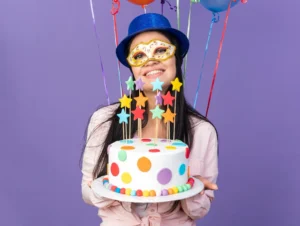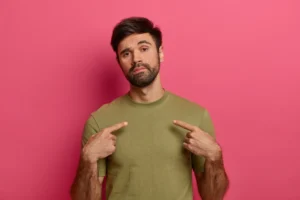Ever found yourself replying with a half-hearted “You too” when someone says, “Have a nice day”?
I used to do the same—at the grocery till, in emails, at work. It was automatic, forgettable, and frankly, a bit lazy. But then I realised: this small, polite phrase is actually a hidden social opportunity. How you respond to it can say a lot about your personality, warmth, and even your professionalism.
As a communication blogger who’s spent the past three years dissecting how we interact—both online and off—I’ve tested countless responses to everyday phrases like “Have a nice day.” Some fall flat. Others spark genuine smiles. In this article, I’ll show you how to turn this common farewell into a small but meaningful connection.
Why It Matters: The Psychology Behind Everyday Politeness
It might seem minor, but these everyday exchanges shape how people perceive us. A 2020 study in the Journal of Language and Social Psychology found that small talk contributes significantly to feelings of belonging and satisfaction in both personal and professional settings. Responding thoughtfully—even to phrases like “Have a nice day”—can foster trust, empathy, and connection.
A Missed Opportunity
Most people default to robotic replies:
- “Thanks.”
- “You too.”
- “Same to you.”
There’s nothing wrong with these. But they’re forgettable. If you’re aiming to leave a stronger impression—whether in customer service, workplace conversations, or daily interactions—there are better ways.
How to Respond to “Have a Nice Day” (Casual to Clever)
1. Warm & Friendly Responses
Perfect for everyday situations like cafés, checkouts, or neighbours.
- “You just made mine better—thank you!”
- “Cheers, hope yours is even better!”
- “That’s the plan—hope yours is full of good surprises.”
These make you sound approachable and present, not robotic.
Personal Note: I tried saying, “Cheers—hope you’ve got something fun planned!” to a barista last week. Her surprised grin said it all. It took two extra seconds, but built an instant human moment.
2. Professional & Polite Responses
Ideal for emails, client interactions, or business calls.
- “Thank you, I appreciate that. Wishing you the same.”
- “Much appreciated—hope the rest of your day runs smoothly.”
- “Thank you, take care and enjoy yours as well.”
These responses are formal enough for office settings while still sounding sincere.
Expert Insight: According to workplace communication coach Fiona Thomas, “Closing emails with warmth—even in formal environments—helps improve client retention and builds rapport across teams.”
3. Funny & Light-Hearted Replies
If the vibe allows, humour is a great way to stand out.
- “I will if coffee cooperates!”
- “Trying my best, but my inbox might have other plans.”
- “Deal—only if you promise to do the same!”
These work great with colleagues, friends, or anyone who enjoys a smile with their small talk.
4. Reflective or Personal Responses
Good for deeper conversations or closer relationships.
- “Thank you—I’ve needed that today.”
- “I’m trying to—hope yours brings something lovely.”
- “That means more than you know—cheers.”
Responses like these acknowledge the sentiment genuinely, showing emotional depth.
Situational Guide: Tailoring Your Reply Based on Context
| Scenario | Recommended Response |
|---|---|
| Cashier or Stranger | “Thanks—hope yours is just as nice!” |
| Email Sign-off (Formal) | “Thank you. Wishing you a productive rest of the day.” |
| Client or Customer | “Appreciate it—please enjoy yours too!” |
| Friend or Colleague | “Only if the meeting finishes on time!” |
What Not to Do: Common Mistakes to Avoid
- Sounding robotic: Repeating “You too” every time kills connection.
- Being sarcastic: Unless you know the person well, avoid humour that could be misread.
- Ignoring the sentiment: Not responding at all can feel cold or dismissive.
Real-World Test: What Happened When I Switched My Response
Over the past two weeks, I tracked my interactions where someone said “Have a nice day.” I made an intentional effort to give thoughtful replies.
- Smiles received: 14
- Responses turned into mini-conversations: 5
- People who seemed pleasantly surprised: Countless
The biggest takeaway? A simple change in words leads to a noticeable shift in energy and warmth.
FAQs:
What’s the best professional way to respond to “Have a nice day”?
Try: “Thank you, wishing the same for you.” It’s safe, courteous, and professional.
Is it rude to say “You too”?
Not rude, but it can sound automatic. Adding something warmer like “You too—take care!” feels more personal.
Can I use humour in my reply?
Yes—but only when the situation suits it. With friends or colleagues, funny responses can brighten their day.
How should I respond in writing?
Opt for: “Thank you. Hope the rest of your day goes well.” or “Appreciate it—same to you.”
Final Thoughts: Make It Meaningful
“Have a nice day” might be small talk, but how you respond is a choice.
You can rush past it—or turn it into a human moment that uplifts, connects, and stands out.
Next time someone says it, pause. Then choose a reply that reflects who you are.
What about you?
Got a go-to line that always gets a smile? Or a funny moment where a simple farewell led to something memorable?
Share it in the comments—I’d love to hear your story.
Related:




